Wednesday, February 13th, 2019

Tommy Bahama Home Living Room Flamingo Octagonal End Table 593-951: Buy furnishings that come from sustainable materials.
More and more people seem to be joining the zero waste movement throughout the world. With videos popping everyday to remind us that we can actually concoct our own deodorants and that used toilet paper can still be recycled to turn into something else entirely.
But what does zero waste mean exactly?
It could mean caring enough so that no stuff that you throw ever goes to the landfill. It could also mean saying no to using plastic.
There are now a lot of influencers who talk you into catching on with sustainable living and letting go of their garbage-filled lives. If you’re ready to live as they do, then here are a few tips that could jump-start your new lifestyle –
No Shopping Bags Please
Instead of having your newly bought items stashed inside a plastic bag, you can just bring a reusable bag with you. The lightweight kind of market bags is light enough to bring with you at all times.
Always be prepared with a reusable bag because you’ll never know when you’ll feel like shopping.
Do Bulk Purchases
Divide your shopping time between the grocery stores and the farmers’ market. Fresh produce can be gotten at the latter but they are often selling in retail. If you want to do some bulk purchase, then zero in on the supermarket. This is the place that could give you the veggies in bulk.
And as you shop, be sure to bring your reusable bags yet again. If you have to bring containers for your liquid purchases, then do so.
Buying in bulk might be more expensive at first but it could actually save you money as you keep at it. Plus you don’t have to worry about the stack of plastic bags that eventually turns into a mountain under the kitchen sink.
Use Rags and Dish Towels, Not Paper Towels
This is one of the easiest transitions that you could do. Sure, it’s convenient to just wipe and throw but you can commit to a better solution. If you’re not used to washing rags, then slowly wean yourself from the paper towels.
You can begin by hiding the paper towels and then getting some unused shirts that you could begin using as a rag.
Cloth napkins can also be used for everyday cleanups.
Store Food in Metal or Glass Containers
There are many reasons why you should pick a glass container instead of a plastic one. Glass is safer, it is better able to hold heat in, and it is transparent and a lot prettier than plastic.
Glass is also a lot cleaner compared to plastic containers.
Practice the FIFO Method
The FIFO or first-in-first-out food storage method is efficient because it ensures that no food goes to waste. Older products, which were bought earlier, are used or consumed prior to the newer ones.
There are just five simple steps to follow for this method –
Make Your Own Stuff
This might not be that easy. You could begin with some kitchen beauty remedies such as honey or ice cubes instead of the usual facial cream. Look for DIY soaps, shampoos, and cleaners.
Cut Down on Your Trash
Take a careful look inside the garbage bags and analyze how you could cut down on the contents. If the bin is already brimming with cartons and plastics, then you know what to do.
Vow to say no to plastic the next day and recycle the things that you could.
Tags: McCreerys, McCreerys Home Furnishings, minimalism, sustainable lifestyle, sustainable living
Posted in Green Living, Interior Design 101, Interior Design Elements | Comments Off on From Neophyte to Recycling Pro
Tuesday, April 3rd, 2018
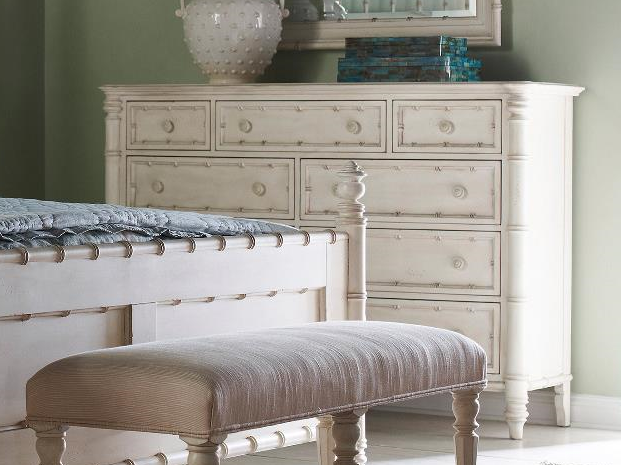
Here’s a Bamboo Dresser from the Summer Home Collection of Fine Furniture Design.
Living in an eco-friendly home may be the hottest lifestyle to hit the world these days but there’s a lot more to this than just being cool. Through an eco-friendly home, you can actually make a huge contribution to Mother Nature’s preservation. With more and more people wanting to help, don’t you think it’s time that you consider changing your lifestyle, too?
Just imagine if more homes would sign up to become a green habitat, with everyone signing up to cut down on their power consumption, manage their wastes, and conserve water, and such. What a peaceful planet we would have.
Set Up a Working Water Management System
Your journey could begin with a water recycling unit. This can take a huge amount of time to plan but it’s going to be worth it once it’s up and running. A reed bed system works in countries such as India. There are many DIY water recycling units on the Internet, here’s one – http://www.ashwidea.in/2013/07/our-diy-grey-water-recycling-system.html
Don’t Cut Down Trees
People usually cut down trees when they build homes. Instead of wasting a grown tree, why not build around it? Your apartment can be nestled in the beauty of a lovely tree, just ask your architect or your builder to retain this lovely natural art. You don’t just get to save a tree as you do this, you also find yourself a uniquely-designed home.
Choose Solar
What can be more renewable than the power of the sun, right? So go ahead and tap this renewable energy source. In the process, you get to reduce your electric bills while improving your grid security. And since you have chosen to go green, then you also reduce your impact on the environment.
The greater news is that solar fixtures are now more affordable. More and more organizations are now enabling homes to install solar panels.
Pick LED
While choosing solar panels to gather energy is already energy-efficient, you could take a few more steps further when you make the right choices on your lighting fixtures, too. LED lighting or solar-powered ones are more energy-efficient. Buy only the cost-effective electronic appliances and be sure to maintain each one of them.
Other options for artificial lighting that can still help you save are fluorescent lights and halogen lights. These tend to last longer plus they are great in conserving energy.
Segregate Wastes
This nation is a nation of increased landfills and mountainous trash. But just like any habit or learning, everything begins at home. Tell every family member to segregate the dry from the sanitary wastes. Be sure to separate the bins and have them color-coded as much as possible.
Bring In the Greenery
The greenery will not just improve the air circulation in your home, it can also visually improve your habitat’s aesthetics. Having potted plants and flowers indoors is also useful especially during the summer.
If you live in an urban jungle where homes do not have the luxury of terraces, then you have to learn to construct vertical gardens or just bring in a potted plant or two.
Use Space and Architecture Efficiently
The efficient use of interior spaces can keep construction materials to a bare minimum. You can ask the interior designers to work on doors and windows that can optimize energy efficiency. Use wood flooring from renewable sources such as bamboo. Install water-saving toilet and other such environment-friendly materials.
Smaller houses are also known to be more energy-efficient. So if you’re not a huge fan of expansive houses, then you might as well do tiny house hunting. Here’s a bonus – smaller homes are a lot more affordable, too.
Tags: green home, McCreerys, McCreerys Home Furnishings, sustainable home, sustainable living
Posted in Interior Design 101 | Comments Off on The Green Home – Why Sustainability Is Hot
Wednesday, September 13th, 2017
We all live in an era where energy efficiency is the hottest trend. But have you ever stopped to think what an energy efficient home is?
According to the U.S. Department of Energy, an energy-efficient home design is one that has a high score on energy efficiency. This Score reflects the energy efficiency of a home based on the home’s structure and heating, cooling, and hot water systems (Source: https://www.energy.gov/energysaver/energy-efficient-home-design)
The Natural Climate
It is important, nay, crucial to know the natural climate in your region. Consider the conditions of the winds, the skies, and the sun. Get your hands on a sun path diagram so you can find out which rooms the natural lighting will seep through. Take note also of obstructions such as telephone poles, trees, and nearby buildings.
Apart from the sun path diagram, you can also obtain a wind rose which will show the rate of prevailing winds. The U.S. Department of Commerce has its own wind data collection. These are based on various airport locations so it might be easy for you to find one that is near your would-be home.
Knowing the predominant sky conditions will also help you set up your energy-efficient home. Throughout the year, does your area have clear, overcast or partly cloudy skies? Take advantage of natural light as much as you can. This will greatly reduce your electrical bill since you won’t be depending a lot on artificial lighting.
Just to give you an idea, overcast skies are three times brighter at the peak of the sky’s dome than the horizon. Predominantly overcast areas include the Pacific Northwest where you can maximize free natural lighting. With this in mind, you can now be aware of your window placement so that you also won’t have unwanted glare.
The building orientation which includes the shape of your home will also greatly influence cooling or heating requirements. The best energy-saving orientation is to have your home face the south when you’re from the Northern Hemisphere.
This setup will help you capture solar gain during the wintry months and block solar gain during summer.
Choose Energy-efficient Building Materials
Concrete or concrete foams. This can be sandwiched by two-layered insulation materials. This will then become a permanent part of the house whether through freestanding walls or building blocks.
Rigid foam. This can be used to insulate your home but can now be made from natural sources such as hemp, bamboo, and kelp. Rigid foam is also widely used in the creation of surfboards, turbine blades, and some furniture.
Rigid foam also offers heat and moisture resistance, better acoustics, and protection from pests and mold.
Straw bales. These weigh 50-90 pounds each. You would need 300 medium-sized bales to construct a 2,000 square foot house.
And the great news is? They can last for thousands of years.
Other materials such as recycled steel, foam insulators sandwiched between plywood, plastic composite lumber, and earth can also be used.
Invest in Energy-efficient Appliances
Reduce energy costs by installing Energy Star-rated appliances. You can potentially save up to 70% when you choose these.
An Energy Star is a government-backed symbol. It is there to measure energy efficiency, reduce the emissions of greenhouse gases, and for consumers to save on their energy bills.
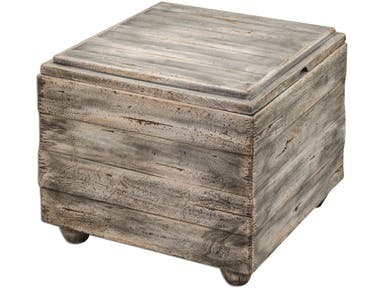
Figure 1.
Green Furniture
Just as you would choose your appliances or your building materials, make sure that your furniture materials are also made from natural, energy-efficient sources. An example is our Uttermost Living Room Avner Wooden Cube Table here at McCreery’s Home Furnishings (Figure 1).
Constructed almost entirely of sustainable, plantation-grown mango wood, this bunching table offers invaluable storage and style in an elegantly casual, waxed driftwood finish.
Tags: Energy Star, energy-efficiency, energy-efficient home, green home, McCreerys, McCreerys Home Furnishings, sustainable design, sustainable living
Posted in Interior Design 101, Interior Design Elements | Comments Off on Erecting the Energy-efficient Home in a Constantly Cold Region
Thursday, February 18th, 2016
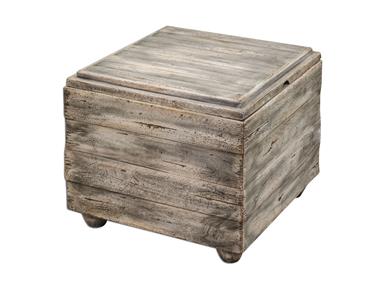
Living Room Uttermost Avner Wooden Cube Table 25603 offers a unique and stylish look to your home as you transition to green living.
Also known as eco living, green living is tantamount to saying that you are living in a sustainable home. This is, after all, the standard that the world looks up to. It is because of this that manufacturers find ways to tell the world about their green credentials. Even appliances now come with energy-saving functions. Some materials that are used in food and other packaging are now recyclable or are actually recycled materials. This new generation of sustainable furniture as well as lighting designs aim to satiate people who have become aware of their roles in keeping Mother Earth intact.
Green Living in Your Home
Healthy interiors can make the tenants feel more comfortable and satisfied. In workplaces, it can even foster employee retention.
Occupant interaction with the surroundings can also impact individual emotional and mental wellness. For offices, it can even improve building operations. Since this is so, it should now be your goal to create sustainable interiors right in your own home.
You should now pledge to make productive use of your space and to use only eco-friendly lights and furniture. Also, the ambiance in your home should have green written all over it.
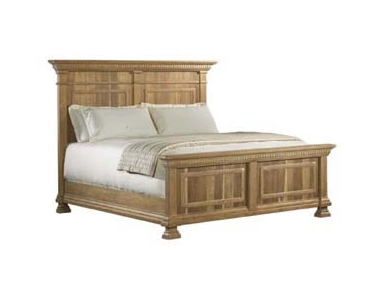
The Artistica Bedroom Axiom King Bed 560-566 is sustainable. It is built with plantation-grown parawood solids as well as acacia veneers.
Green Living: Lighting
There are many benefits that come with eco living and when you decide to apply it even in interior design. You can now effectively combine energy saving technology with utility. Many appliances now have energy storage with some even installed with photovoltaic cells.
With eco-friendly lighting come not just energy savings but also the perfect look for ambient spaces. Energy saving bulbs use up less energy when compared to traditional light bulbs. What a wonderful sight it is to behold a dynamically created lighting fixture in your home! It spells poetry in the form of light while serving as a reliable light source for your lovely ambience.
Green Living Is In
Just like other design industries, the world of interior design is forever tied to volatile styles. In essence, it is like assessing clothes whether they are hot or they’re not.
Whether the client’s goal is to renovate, decorate or to create architectural detailing, interior designers must always be up on their toes with regard to what’s hot in their field. The trend at the moment – and probably the fastest growing segment of the interior design industry nowadays – is sustainability.
Bamboo and other sustainable materials are hot. And with the ASID (American Society of Interior Designers attesting that sustainability should be one of the areas of focus for interior designers today, everyone is simply geared towards the use of sustainable materials and wasting not. Even the curricula in different design schools already include sustainability as one of their crucial courses.
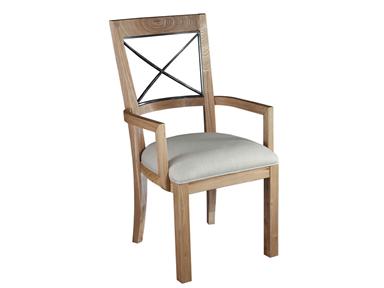
The Artistica Dining Room Idiom Arm Chair 451-010 is manufactured using plantation grown elm. It is beautifully combined with industrial steel to give you that architectural and textural wonder.
Green Living for the Homeowner
Whether you wish to become an interior designer someday or are just taking on an interior design project on your own, then you have to remember these guidelines –
Green living doesn’t have to be time consuming. It is a matter of making that conscious decision to change your lifestyle and the way you run things in your home. Yet this does not mean that your living space should look boring, though. You can still beautify your home by using your artistic eye in choosing sustainable furnishings.
Tags: eco living, eco-friendly home, eco-friendly interior design, eco-friendly interiors, eco-friendly tips, energy efficient living, energy-efficiency, energy-efficient home, green interiors, green living, McCreerys, McCreerys Home Furnishings, sustainability, sustainable design, sustainable living
Posted in Interior Design 101, Interior Design Elements, Interior Design Themes, Interior Design Trends | No Comments »
© McCreery's Home Furnishings | All Rights Reserved | Privacy Policy